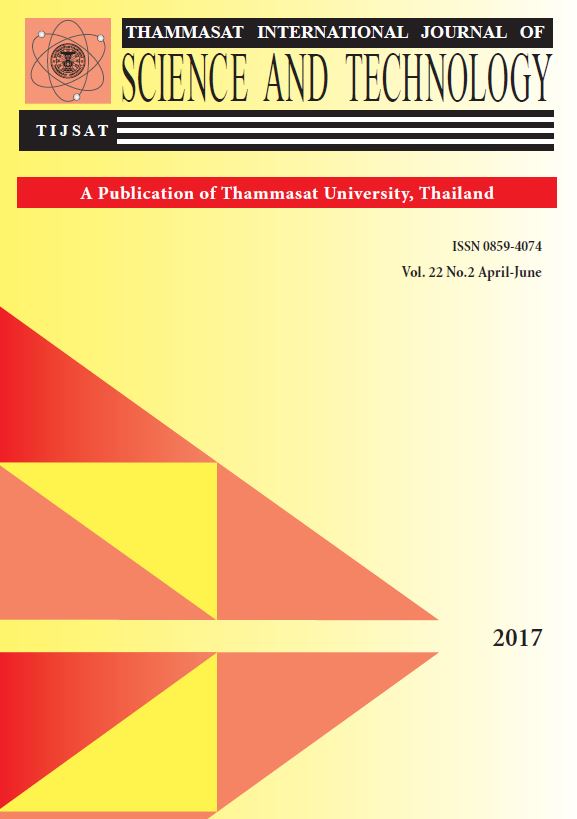Structural Equation Model of Safety Implementation and Productivity in the Textile Industry
Main Article Content
บทคัดย่อ
The textile industry is considered one of the industries with high accident rates that lead to less job satisfaction, high compensation cost, bad industry image, and low productivity. To reduce the number of accidents, a sound and practical safety implementation must be encouraged. Since management and employees are key input to enhance productivity, this study investigates the relationships between safety implementation and productivity. A total of 28 items associated with three key factors, namely the People, People Results, and Productivity factors, are used for a questionnaire survey development. Three hundred questionnaires are distributed, with 130 questionnaires returned, representing a 43.3 response rate. The exploratory factor analysis confirms four key factors with their associated items. The structural equation modelling proves a significant relationship between the People (Management) and People (Employee) factors. It is also found that these two factors have no direct relationship with the Productivity factor, but an indirect relationship through the People Results factor. To enhance the productivity, hence, management has to empower employees with a practical safety implementation plan, establish a safety committee, and enhance safety communication in the workplace. Employees, on the other hand, should participate in safety activities, help each other in improving safety, and comply with safety rules. All of these lead to higher job satisfaction, lower turnover, less rework, and eventually increased productivity.
Article Details
รูปแบบการอ้างอิง
Thanwadee, T., Suanmali, S., & Ammarapala, V. (2017). Structural Equation Model of Safety Implementation and Productivity in the Textile Industry. Science & Technology Asia, 22(2), 46–60. สืบค้น จาก https://ph02.tci-thaijo.org/index.php/SciTechAsia/article/view/91004
ประเภทบทความ
Engineering


